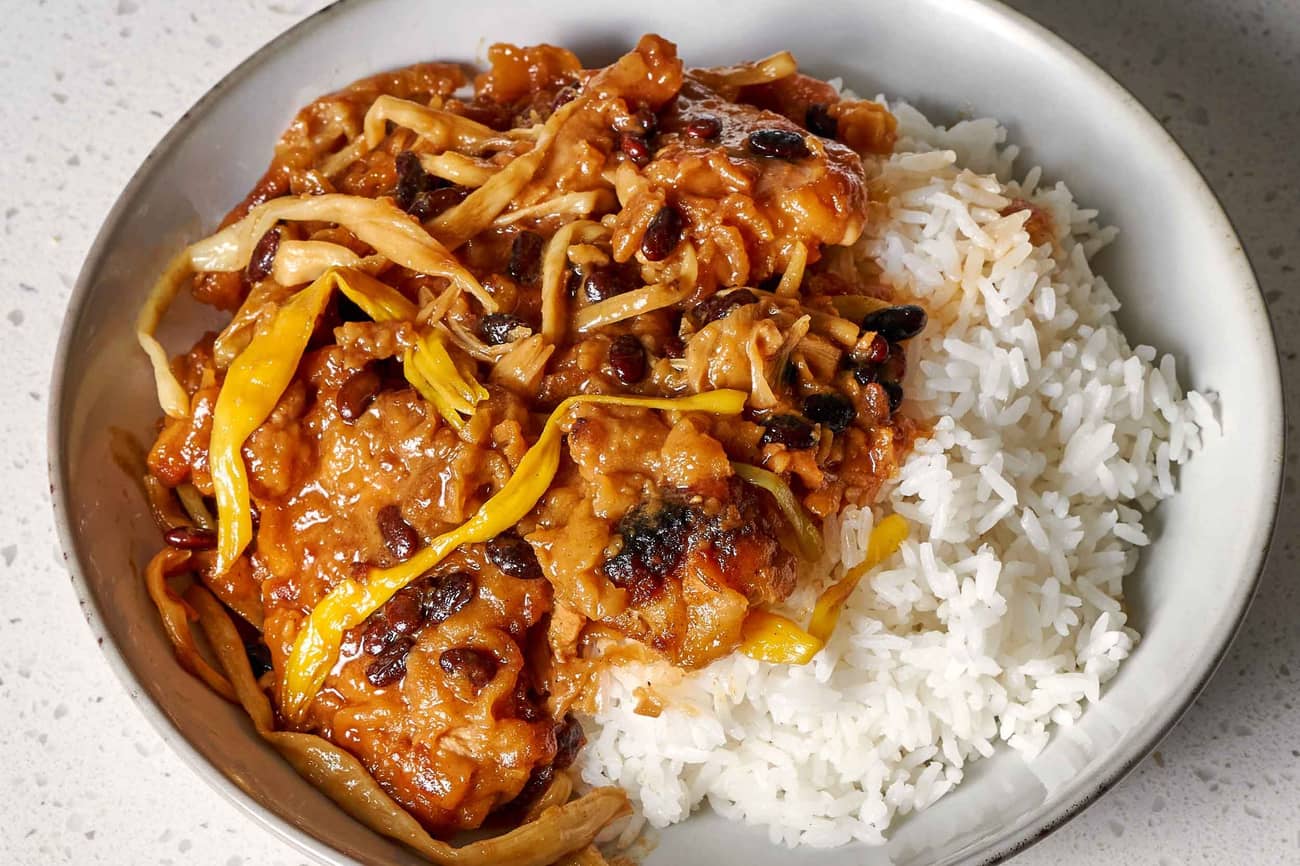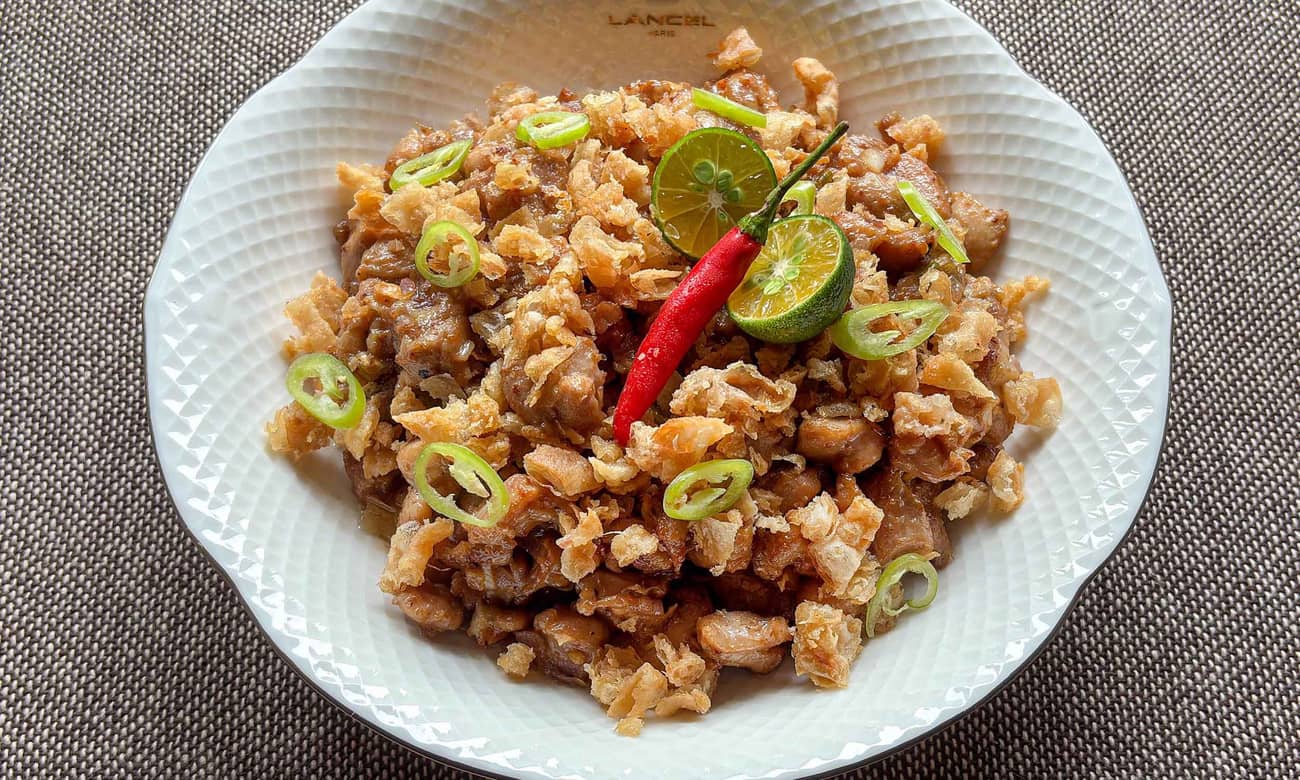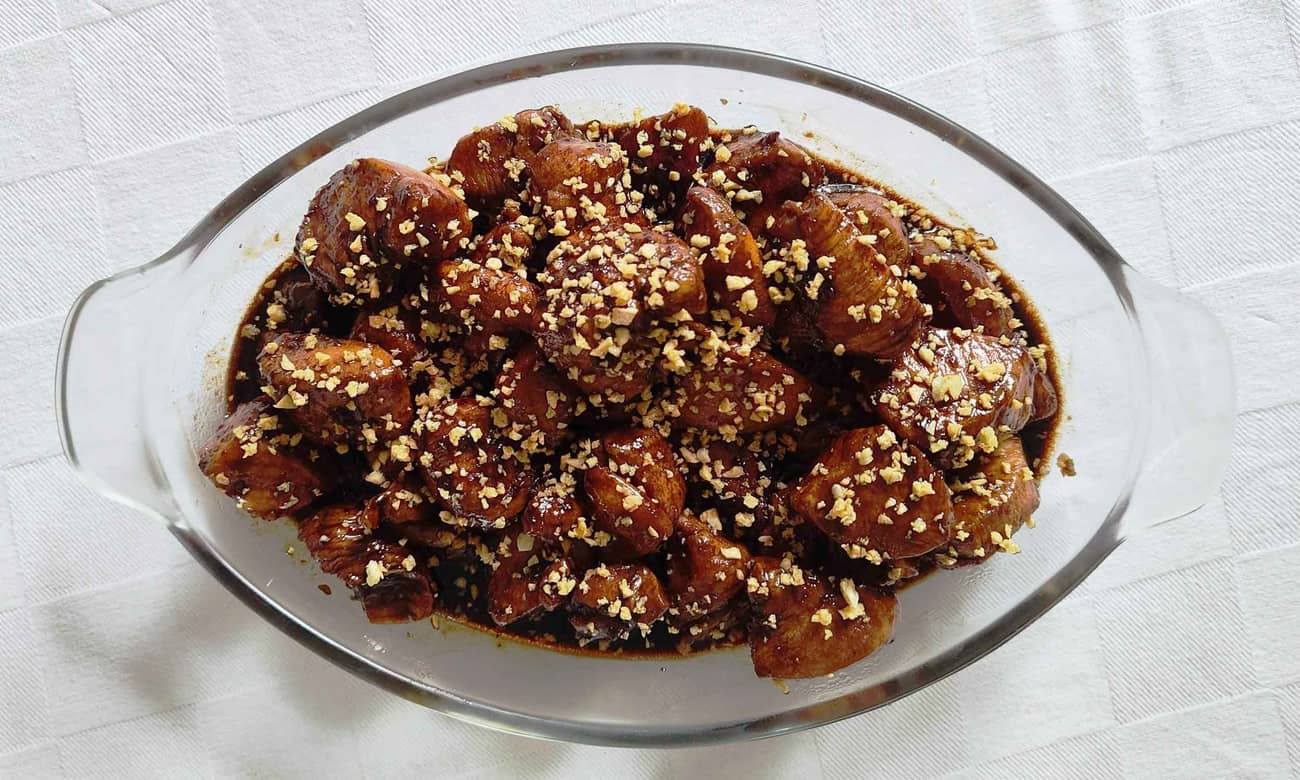
A soy-based marinade plus a light coat of potato starch makes Japanese karaage juicy, flavorful, and crunchy.
If there's one language that everyone understands, it's fried chicken. It doesn't matter whether you're having American buffalo wings or Taiwanese chicken chops or Korean yangnyeom fried chicken. We all love our deep-fried bird, in every shape and form.
Japan has karaage: light yet crunchy bites of chicken seasoned with soy, garlic, and ginger. Boneless karaage fries faster and easier than your typical bone-in fried chicken, making it a great starter dish for the deep-frying novice.
As soon as they leave the hot oil, you want to season your karaage with some togarashi and salt. This gives your chicken an extra pop of flavor.

This Japanese seasoning translates to "chili pepper" in English. There are three types of togarashi: ichimi togarashi (one-flavor spice), or ground chili pepper; shichimi togarashi (seven-flavor spice), made with 7 spices and aromatics; and nanami togarashi, shichimi with stronger citrus flavors.
Serve karaage as a side dish (as some ramen shops do), or over rice with some shredded cabbage.
Marinate chicken: Slice chicken into 1 ½- to 2-inch pieces. Combine soy sauce, garlic, ginger, sesame oil, sugar, salt, and pepper in a mixing bowl. Toss chicken pieces to evenly coat. Set aside to marinate for at least 35 minutes. Add egg to marinade and toss chicken to coat.
Prepare for frying: Heat oil in a wok or heavy-bottomed pot to 325°F (160°C). Prepare a batter station by adding potato starch to a baking tray or deep dish. Season starch with salt and pepper.
Fry chicken: Toss marinated chicken in potato starch. Working in batches, fry battered chicken until coating is firm and light golden brown, about 3 minutes. Transfer to a metal rack or heatproof plate lined with paper towels. Let chicken cool for at least 2 minutes.
Double fry chicken: Increase oil temperature to 375°F. Working in batches, fry rested chicken until crispy and deep golden brown, about 1 minute. Transfer to metal rack or paper towel-lined plate to drain excess oil. Season each batch with salt and togarashi (if using) while hot.
Serve: Arrange shredded cabbage on a serving plate. Stack karaage over the nest of cabbage, with lemon wedges on the side. Serve with Kewpie mayo.
If you can't find chicken thigh fillets, use boneless leg quarters. We recommend these cuts for their flavor and moisture.
You can use chicken breasts in a pinch, but take note that it tends to dry out faster than thigh or leg quarter cuts.
You can use cornstarch instead of potato starch.
Double frying does two things: it helps keep your chicken juicy, and it retains the batter's crispiness longer. It's a technique for advanced home cooks who want perfect karaage.
Don't get us wrong—a single fry can still get you great fried chicken. But it risks overcooking and drying out your chicken before your batter crisps up. For surefire juicy chicken with a crispy coating, try double frying.
Sure! Heat your oil to 350°F, then fry your chicken until golden brown and crispy, about 5–7 minutes.
We serve our karaage with Kewpie mayo—its tang plays well with fried foods.
You can also prepare simple soy-based dipping sauce with 3 tbsp soy sauce, 2 tbsp rice vinegar, and 1 tbsp mirin. Season to taste with sugar and sesame oil.
Chicken nanban, a Euro-Japanese fried chicken dish, comes with tartar sauce. We don't see why you shouldn't try it with karaage, too.


